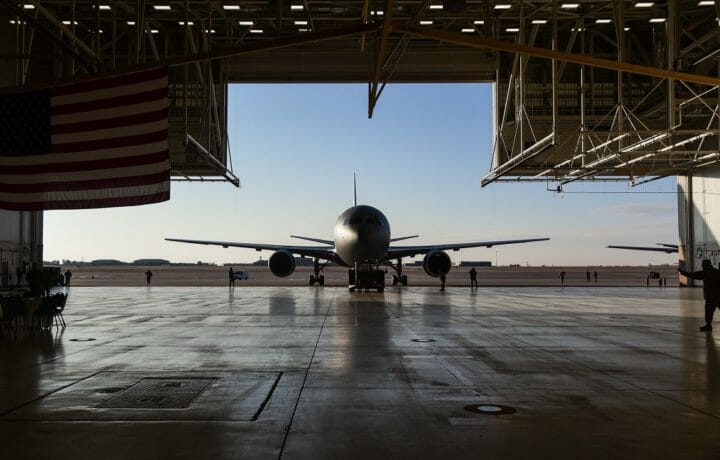The United States Air Force opted to forgo plans that would have seen multiple companies competing to build new aerial refueling tankers. Instead, the service announced last week that it will procure 75 new KC-46 Pegasus aircraft.
“The Air Force is investing in both tanker capacity and capability to enable the Joint Force now and into the future by ensuring an uninterrupted recapitalization of KC-135 aircraft,” the Air Force said in a statement.
“The Air Force approved an acquisition strategy to extend KC-46A production by up to 75 aircraft. This ‘KC-46A Production Extension’ program will maintain uninterrupted tanker recapitalization after final delivery under the current contract,” the Air Force added.
Competition Canceled
The Air Force had previously called for a competition to acquire upwards of 150 tankers. The aircraft were to have been modified from existing designs, including the KC-46 and the Airbus A330 Multi-role Tanker Transport.
The latter aerial refueler was to have been produced by Lockheed Martin, and designated the LMXT in the U.S. market, according to a report from Breaking Defense.
However, in 2022, former Air Force Secretary Frank Kendall opted to ground the competition after hinting that the service would seek sole-source tankers from Boeing. The program was further scaled back to just 75 aircraft, after which Lockheed Martin exited, leaving Airbus without a U.S. prime contractor.
The original program of record called for 179 tankers and is now nearly complete. It was previously increased to 188 aircraft, the maximum available under the current contract. The Tanker Production Extension program will see Boeing obtain upwards of 75 additional aircraft.
More KC-46A
Development of the KC-46A Pegasus began in 2011, based on the Boeing 767 jet airliner. It was selected by the U.S. Air Force as the winner of the KC-X tanker competition to replace the aging Boeing KC-135 Stratotankers, and the first Pegasus was delivered to the service in January 2019.
It can accommodate a mixed load of passengers, as well as aeromedical evacuation and cargo capabilities. The tankers are equipped with a refueling boom driven by a fly-by-wire control system, and will be capable of “fuel offload rates” required by the Air Force’s larger aircraft.
Fuel can be pumped via the boom, as well as drogue and wing aerial refueling pods, to support Air Force, U.S. Navy, U.S. Marine Corps, and partner nation receivers.
Deliveries Paused
Despite the tanker’s capabilities, deliveries have been paused multiple times due to issues discovered during the routine operations.
The most recent incident occurred in March 2025, following the discovery of cracks on some airframes. That has also led to billions of dollars in cost overruns and delayed full adoption of the KC-46A. Boeing has stated that the cracks were not a safety flight concern, but it acknowledged that they needed to be addressed.
Although deliveries have resumed, the Air Force and Boeing continue to resolve issues with the Remote Vision System (RVS) for boom operators. It provides images to boom operators in the aircraft’s two Aerial Refueling Operator Stations (AROS), and is currently more than a year behind schedule.
RVS 2.0 may not be employed on the refueling aircraft until summer 2027. It promised to be a significant improvement from older tankers, including the KC-10 Extender and KC-135 Stratotanker, which required the boom operators to look through a window in the rear of the aircraft. In the case of the KC-135, boom operators must even lie on their stomachs while carrying out the operation.
The KC-46 was designed to position the boom operators in stations at the front of the tanker; however, the RVS has faced numerous problems, including distorted images. The RVS 2.0, which will employ more advanced sensors, screens, and even a 4K ultrahigh-definition camera capable of producing a 3D, full-color image, was designed to address these shortcomings.
WARP Speed
Progress has been made on other capabilities, however.
In April 2024, the 22nd Air Refueling Wing at McConnell Air Force Base (AFB), Kansas, received its first sets of KC-46A Wing Air Refueling Pods (WARP), which are mounted on its wings and allow the Pegasus to refuel two aircraft simultaneously.
This can significantly enhance the ability to offload fuel, nearly twice as fast as with probe and drogue-equipped receivers.




